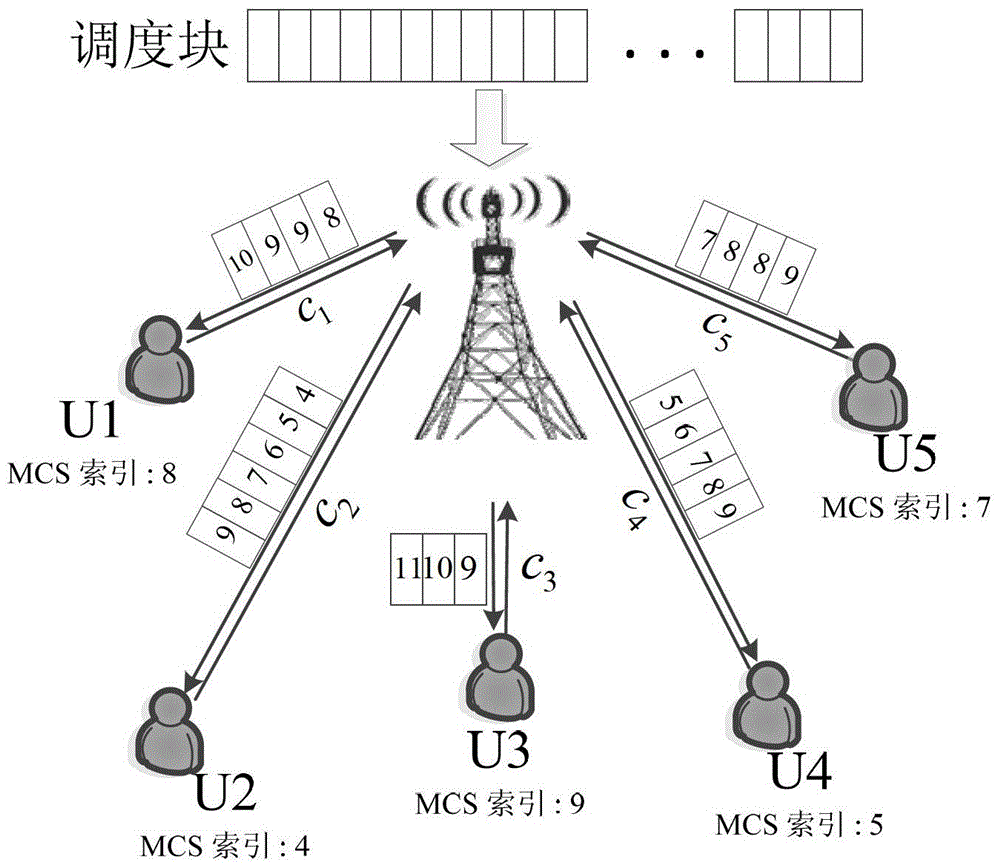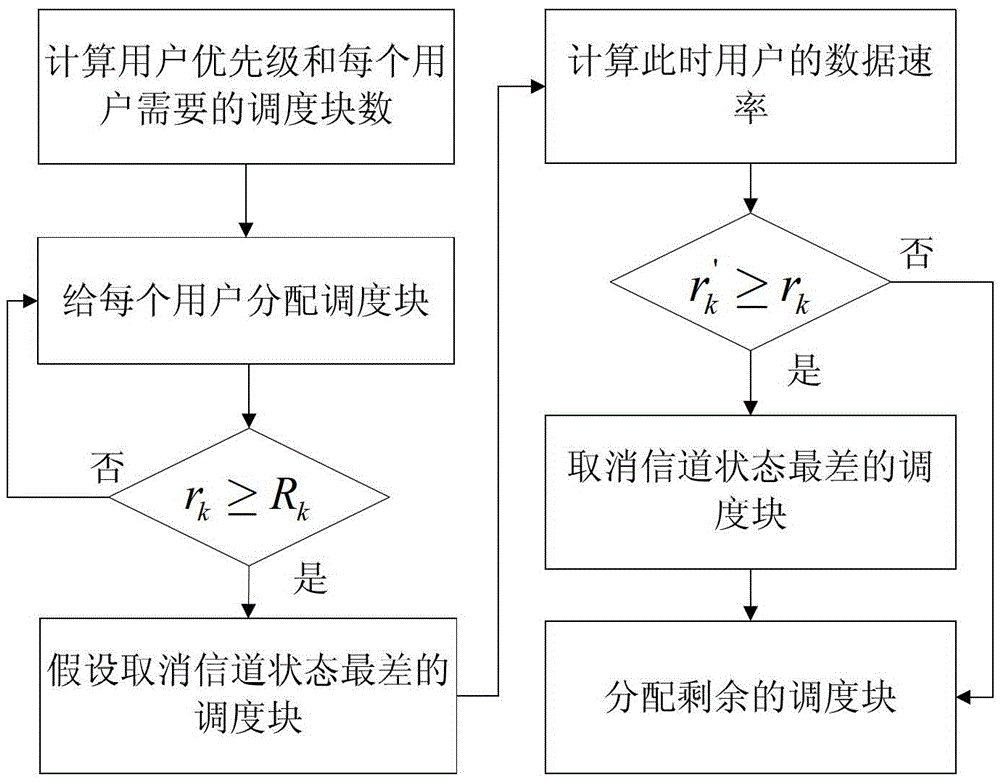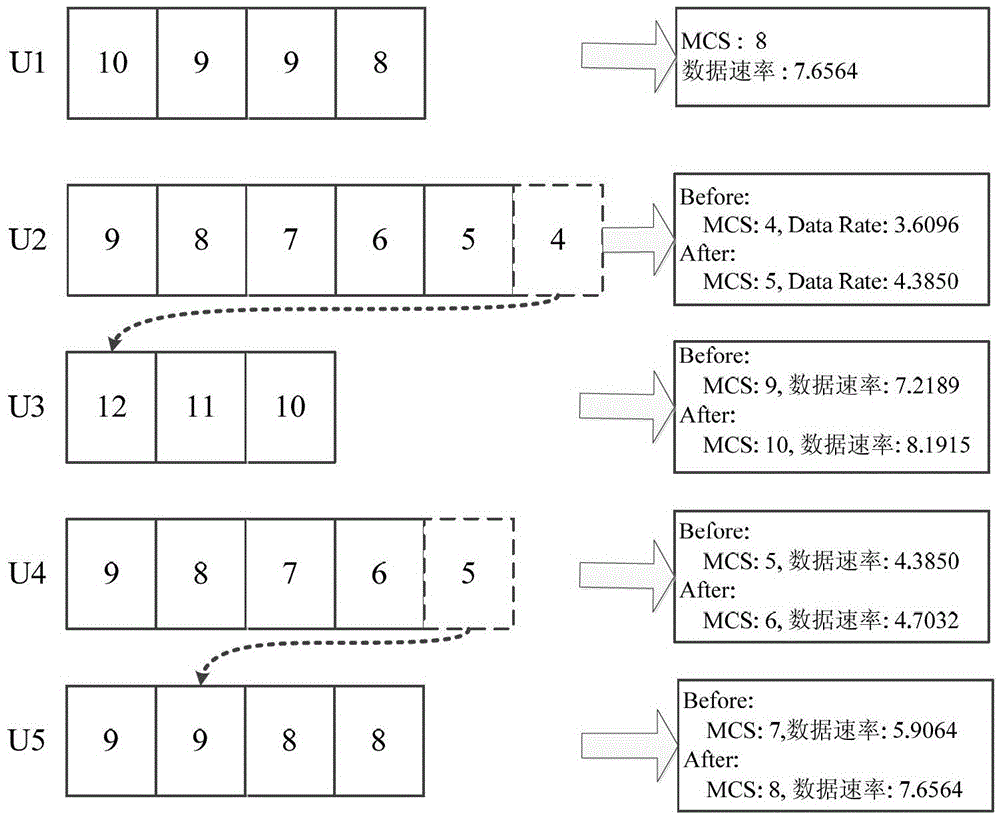A two-step resource block allocation method in LTE downlink system
A resource block allocation and adjustment allocation technology, applied in the transmission system, digital transmission system, electrical components, etc., can solve the problems that the user cannot meet the minimum rate requirement, the user cannot meet the minimum rate requirement, and does not consider the user rate requirement, etc., to achieve Flexible allocation schemes, relaxation of user data rate restrictions, and system performance improvement effects
- Summary
- Abstract
- Description
- Claims
- Application Information
AI Technical Summary
Problems solved by technology
Method used
Image
Examples
Embodiment Construction
[0039] The present invention will be described in further detail below in conjunction with the accompanying drawings.
[0040] The present invention is aimed at a resource block allocation method in a Long Term Evolution (Long Term Evolution, LTE) downlink system. The LTE system stipulates that all scheduling blocks allocated to the same user use the same modulation and coding scheme (Modulation and Coding Scheme, MCS), and this modulation and coding scheme is determined by the scheduling block with the worst channel status among all the scheduling blocks allocated to the user. Obviously, the performance of the system is limited by the scheduling block with the worst channel state. In order to solve this problem, the present invention proposes a block allocation scheme for efficient resource utilization. First, calculate the number of scheduling blocks required by each user and the priority of each user according to the proportional fairness criterion, and assign correspondin...
PUM
 Login to View More
Login to View More Abstract
Description
Claims
Application Information
 Login to View More
Login to View More - R&D
- Intellectual Property
- Life Sciences
- Materials
- Tech Scout
- Unparalleled Data Quality
- Higher Quality Content
- 60% Fewer Hallucinations
Browse by: Latest US Patents, China's latest patents, Technical Efficacy Thesaurus, Application Domain, Technology Topic, Popular Technical Reports.
© 2025 PatSnap. All rights reserved.Legal|Privacy policy|Modern Slavery Act Transparency Statement|Sitemap|About US| Contact US: help@patsnap.com



